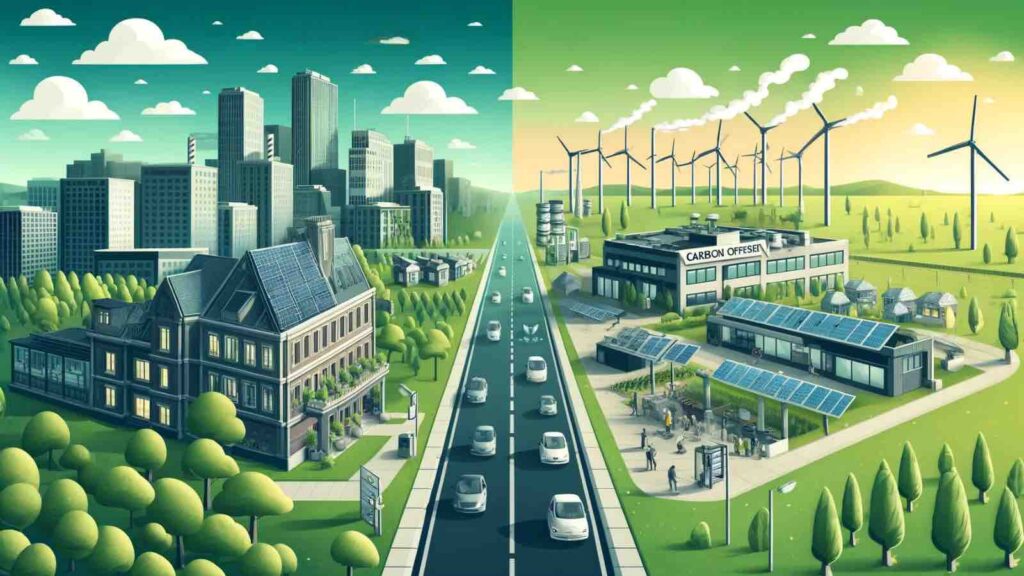Two phrases that have gained particular prominence are “net zero” and “carbon neutral” – but what exactly do they mean, and how do they differ?
As corporations and governments alike pledge ambitious climate commitments, a confusing array of terms has emerged, leaving many wondering about the true impact of these promises. Two phrases that have gained particular prominence are “net zero” and “carbon neutral” – but what exactly do they mean, and how do they differ?
In 2019, Amazon announced they’d be “net zero carbon” by 2040, while Microsoft claimed they’d be “carbon negative” by 2030. Later that year, Apple declared that it would be “carbon neutral” for its supply chain and products by 2030. These varying terminologies can be perplexing, but the distinctions are significant, especially when applied on a global scale.
RELEVANT SUSTAINABLE GOALS



Breaking It Down: Definitions
Carbon Neutral: The term “carbon neutral” refers to an activity or a company that offsets the same amount of carbon or greenhouse gases that they emit. In this scenario, emissions produced and offset are equivalent. However, carbon neutrality alone will not suffice to keep the world under the 1.5°C target set by the 2015 Paris Agreement.
Net Zero: “Net zero” (with reference to a “net zero commitment”) means reducing all greenhouse gas emissions as much as humanly possible and offsetting only the essential emissions that remain. Net zero GHG emissions are designed to keep the global temperature rise below 1.5°C – in line with pre-industrial levels.
Carbon Negative and Climate Positive: These terms refer to a company or an activity that achieves carbon neutrality and goes further by removing more carbon from the atmosphere than they emit in the first place.
Climate Neutral: This holistic approach involves reducing all greenhouse gas emissions as much as possible, offsetting the essentials (i.e., net zero), and ensuring that an organization or activity is not contributing to any other negative environmental impacts, such as the use of fossil fuels or the degradation of carbon sinks.
Achieving Carbon Neutrality and Net Zero
To achieve carbon neutrality, a company must balance its carbon emissions by purchasing carbon offsets equivalent to its emissions. While the PAS 2060 certification for carbon neutrality requires companies to set reduction targets, it does not specify the extent of these reductions, making it a less stringent standard.
In contrast, reaching net zero emissions is a more challenging and long-term goal. It involves reducing emissions by 90-95% and offsetting only the hardest-to-decarbonize emissions. Companies often use carbon removal credits for this purpose, which are currently more expensive and less widely available than carbon reduction offsets.
Standards and Certifications
- PAS 2060: The international standard for carbon neutrality, requiring measurement of total emissions, setting reduction targets, and purchasing carbon reduction credits.
- SBTi Net-Zero Standard: Introduced by the Science Based Targets initiative (SBTi) in 2021, this standard helps companies set science-based targets to achieve net zero. It includes rapid and extensive emission reductions, short-term and long-term targets, and additional climate change investments.
Offsets for Carbon Neutrality and Net Zero
While carbon neutrality represents a step in the right direction, it is the more ambitious goal of “net zero” that garnered significant attention at COP26, the 2021 United Nations Climate Change Conference. Achieving net zero requires a comprehensive approach, involving renewable energy investments, carbon capture and storage systems, and the purchase of carbon credits.
As the world grapples with the escalating climate crisis, the distinction between these terms takes on heightened importance. While carbon neutrality offers a temporary solution, the ultimate objective must be to achieve net zero emissions globally – a target that demands concerted efforts from corporations, governments, and individuals alike.
Lead image courtesy of ChatGPT 4.0 with prompt “A split scene illustrating the concepts of net zero and carbon neutral.”
You may also be interested in :
Indonesia and The Philippines Spearhead a $6.3 Billion Surge In Southeast Asia’s Green Investments



